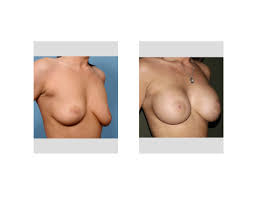The placement of a breast implant is often viewed as being either under the pectoralis muscle or above it. When it comes to being above the muscle in the so-called subglandular position it can only be completely in that position. But when it comes to the submuscular position, a partial or complete placement relative to the muscle border is possible. This partial submuscular implant location is known as the dual-plane in which the bottom half of the implant is located below the muscle in the subglandular plane.
By placing an implant in two simultaneous tissue planes, the lower half of the breast tissue is expanded. This could be very useful in women that present for breast augmentation that have a mild degree of sagging. Breast sagging, known as ptosis, is a frequent confounding factor in breast augmentation. Contrary to popular perception, a breast implant has a very limited breast lifting capability. Only when the nipple is above the level of the inframammary fold can the plastic surgeon be assured that the nipple will end up in the center of the newly enlarged breast mound. But when the nipple is at or lower than the fold, some form of a breast lift will always be needed if the nipple is to be centered on the mound.

In the January 2013 issue of the Aesthetic Surgery Journal, a clinical study on the dual-plane approach to breast augmentation in women with mild degrees of sagging was published. Over a period of eight years, a total of near 2000 women who underwent primary breast augmentation with either saline or silicone breast implants was evaluated. Of this group 256 patients underwent a dual-plane approach due to their existing breast ptosis. Their findings show that the dual-plane breast augmentation approach is best used for those patients that have minimal ptosis. In other words, those women that fall into the gray area of whether they should have a traditional breast implant approach or may need some form of a breast lift.
I have used the dual-plane approach for years and do find it to be useful when placing breast implants in women with mild ptosis/ (nipple at the level of the inframmary fold) One other technique that can accompany the dual-plane approach in these patients is to also do a simultaneous nipple lift. (superior crescent lift) This is a great way to hedge your bet so to speak to get the nipple as high up on the breast mound as possible. This combination will work most of the time to avoid breast lift scars in these ‘tweener’ patients.
Dr. Barry Eppley
Indianapolis, Indiana


